Ancistrus is one of the most spread species in the family Loricariidae, it’s a very popular tank fish, in the aquarium trade where they are known as bushynose or bristlenose catfish. Both beginners and experienced aquarists know about it and keep it. Bristlenose pleco has caught such close interest due to its features: the fish is called a “tank cleaner”, it’s easy in care, its behavior is quite extraordinary, its cupule-mouth structure makes it remarkably different from a number of other fishes.
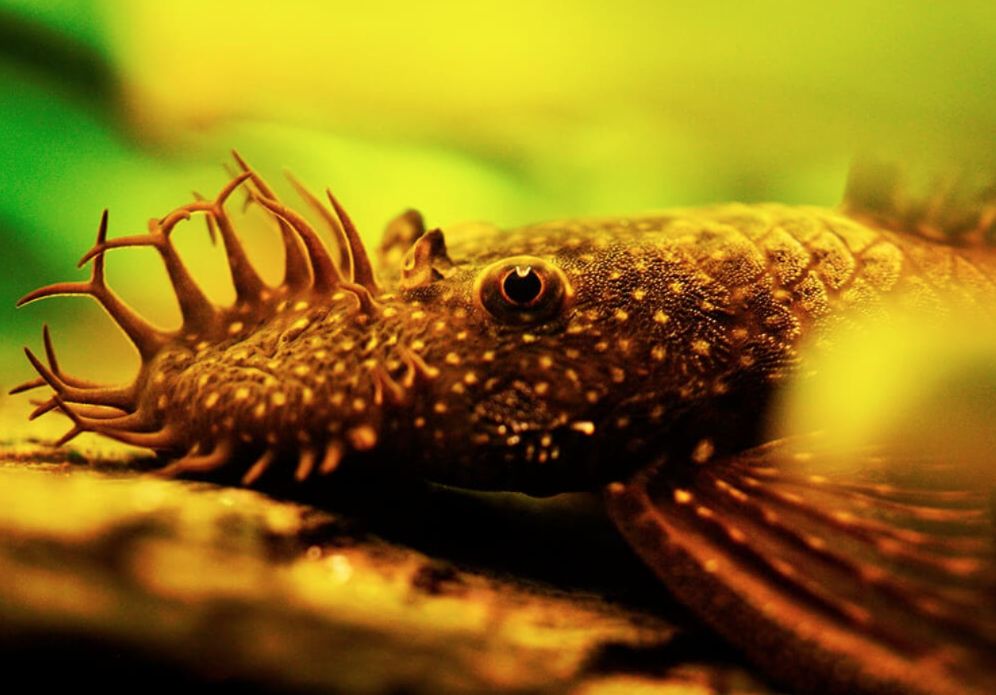
Contents
Habitat in the wild
The bristlenose pleco is native to South America, especially often it can be seen in the Amazon river basin. In habitat of Loricariidae family catfish the water most of the year has the following parameters: hardness — 4—5 °dH, acidity (pH) — about 6. The flow is relatively fast, the water is oxygen-rich. In their natural habitat, Bristlenose plecos inhabit areas with dense aquatic vegetation, such as submerged plants, floating plants, and algae-covered surfaces. Bristlenose plecos are nocturnal and like to hide during the day.
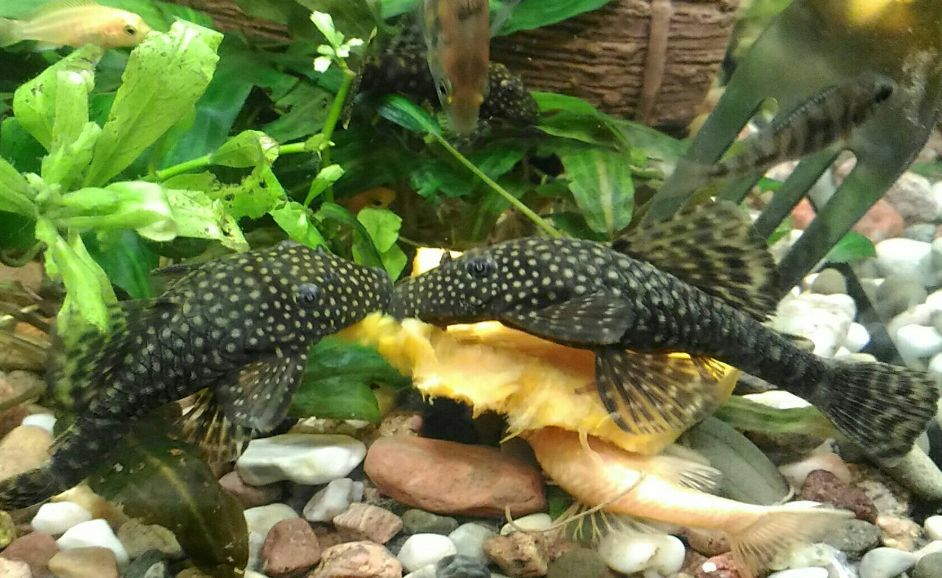
Description
Please note that the Latin name “Ancistrus spp.” refers to the genus Ancistrus, which encompasses several different species of plecos. The genus Ancistrus belongs to the family Loricariidae, which is commonly known as the armored catfish or suckermouth catfish family. Ancistrus comprises various species of freshwater catfish commonly referred to as bristlenose plecos, bristlenose catfish, bushymouth catfish.
Bristlenose pleco has flattened plain body completely covered in polyangular bony plates. The scales of plecos are covered by a layer of skin, which gives them a smooth and often armored appearance. The skin of plecos is thick and may have bony plates or plates covered in small, bony tubercles, depending on the species.
Its body has a pair of pectoral and abdominal fins. Its roundish mouth and elongated lips with horn cupule is especially interesting, these cupule help the fish to live in fast flowing waters by sucking on stones and snugs. There are some horn buds on the cupule (sometimes they are called a “grater”) meant for scrubbing some plant fouling and animal substance from plants, stones and other surfaces in a tank. In the wild these are the main source of food for that catfish.
The body is usually of dark-brown color or more seldom it’s grayish (the coloring also may have some spots of brighter colors) with promiscuously scattered small bright spots which turn into lines on the fins. The bottom abdomen side of the body is a bit brighter than its back side.
There is also two types of bristlenose pleco:
- Long-finned Bristlenose plecos are a variation of the Bristlenose pleco (Ancistrus spp.) that possess longer and more flowing fins compared to the standard Bristlenose pleco. They are selectively bred for their unique finnage, which can add an attractive and graceful appearance to these already popular aquarium fish. The long-finned trait is a result of specific breeding efforts aimed at promoting and maintaining the elongated fins in bristlenose plecos. These longer fins can include the dorsal fin, pectoral fins, and caudal fin, creating a more elegant and eye-catching appearance.
- Albino bristlenose plecos possess a genetic mutation that causes a reduction or absence of melanin, the pigment responsible for the typical dark coloration in plecos. As a result, their body and fins appear pale or white, and their eyes may appear pink or red due to the lack of pigmentation in the iris.
It doesn’t differ from the ordinary one but for the coloring and the fins length. The rest of their characteristics and care requirements are generally similar to those of the standard bristlenose plecos. Moreover, common catfish may have albino or longfinned bristlenose pleco in their spawn.
Size
How big do bristlenose plecos get?
It is one of the smallest tank catfish: its size is in the range from 4 to 6 inches (10 to 15 centimeters), but usually even the male size doesn’t exceed 15 cm (5 in). Males tend to be slightly larger than females and may have longer bristles on their faces. It’s important to note that the size can also be influenced by factors such as the quality of care, diet, and tank conditions.
Growth rate
How fast do bristlenose plecos grow?
In general, bristlenose plecos have a moderate growth rate compared to some other species of fish. During their first year of life, plecos can experience relatively rapid growth. They typically grow from a small size at hatching to several inches in length within the first year. However, growth rates can slow down as they mature. The growth rate of bristlenose plecos can also be influenced by the quality and variety of their diet. Providing them with a balanced and nutritious diet that includes a mix of high-quality sinking pellets, vegetables, and occasional protein-rich foods can promote healthy growth.
Lifespan
How long do bristlenose plecos live?
On average, bristlenose plecos have a lifespan of 3 to 7 years. However, with proper care, some individuals have been known to live for up to 10 years or even longer. The lifespan of a bristlenose pleco can be influenced by several factors, including genetics, water quality, diet, tank conditions, and overall care. Providing them with a suitable environment, balanced diet, and regular maintenance can contribute to their longevity.
| Characteristic | Description |
|---|---|
| Latin Name | Ancistrus spp. |
| Common Name | Bristlenose pleco, bushymouth catfish |
| Size | Typically 4 to 6 inches (10 to 15 cm) in length, but can vary depending on the individual and species. |
| Lifespan | Average lifespan of 5 to 10 years, but can live up to 15 years or longer with proper care. |
| Appearance | Stocky body shape with flattened abdomen, tentacle-like bristles on the face (more prominent in males), and armored plates on the body. |
| Coloration | Varied colors, including brown, gray, or black with mottling patterns. Albino variants are pale or white. |
| Compatibility | Generally peaceful and compatible with a wide range of community fish, but males can be territorial with other males. |
| Diet | Omnivorous, feeding on algae, biofilm, and vegetable matter. Also accepts sinking pellets and occasional protein-rich foods. |
| Behavior | Nocturnal and secretive, often hiding during the day. May become more active and visible during feeding times. |
| Tank Requirements | Tank size of at least 20 gallons (75 liters) for a single specimen, with appropriate hiding spots and ample surface area for grazing. |
| Water Parameters | Prefer soft to moderately hard water with a pH range of 6.5 to 7.5 and a temperature range of 72°F to 82°F (22°C to 28°C). |
| Breeding | Prolific breeders under favorable conditions, typically breeding multiple times a year. Males guard the eggs. |
| Maintenance | Regular water changes, monitoring water parameters, and providing a balanced diet. Also, maintaining good filtration and a clean tank. |
.
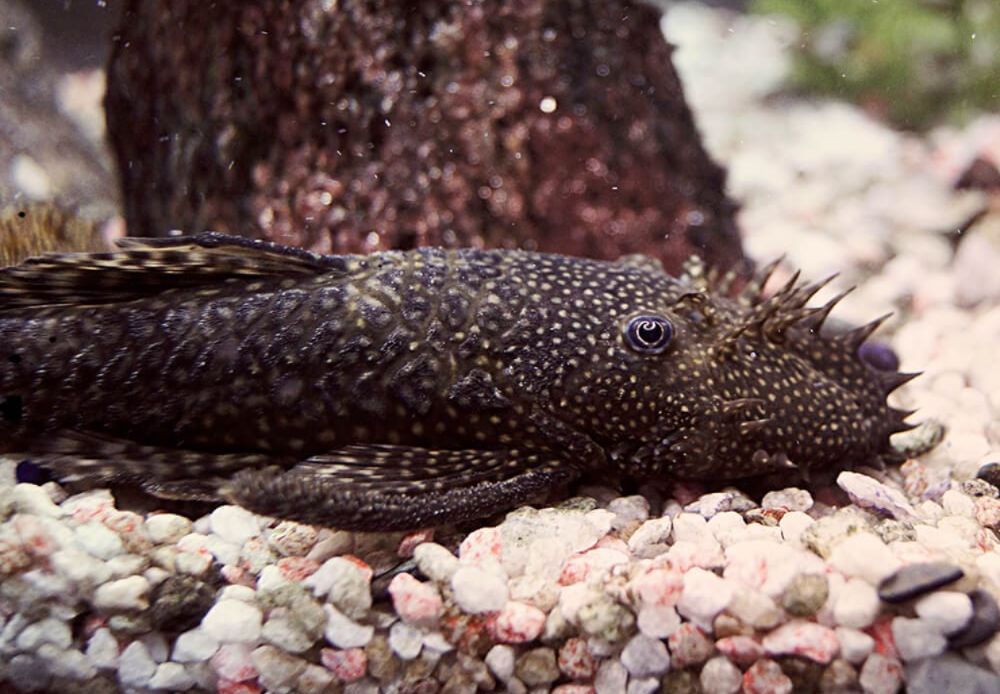
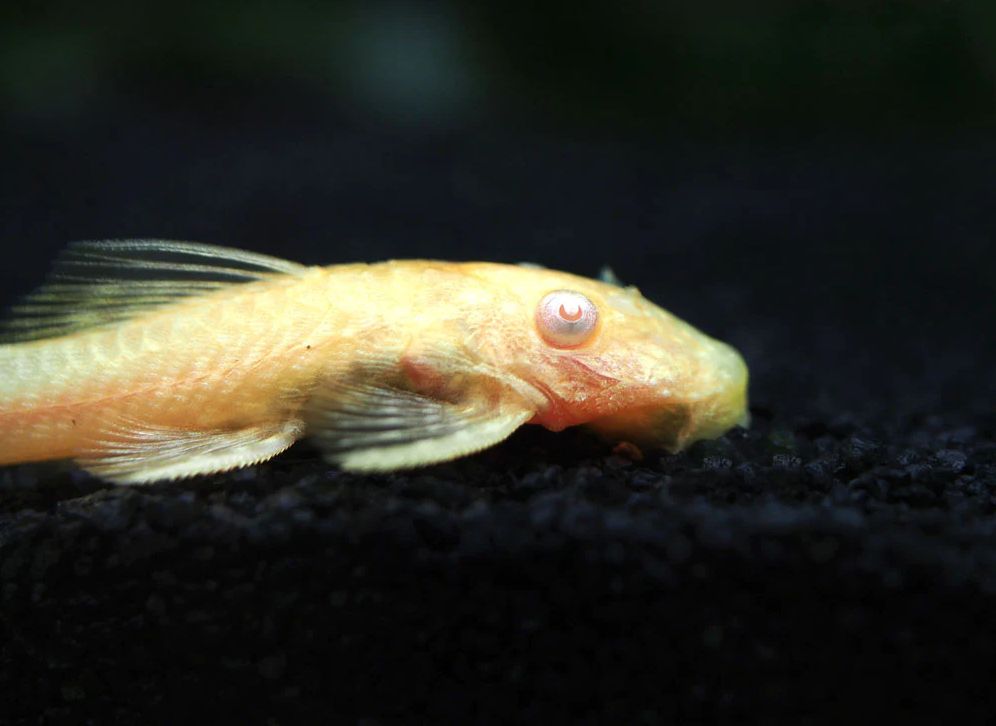
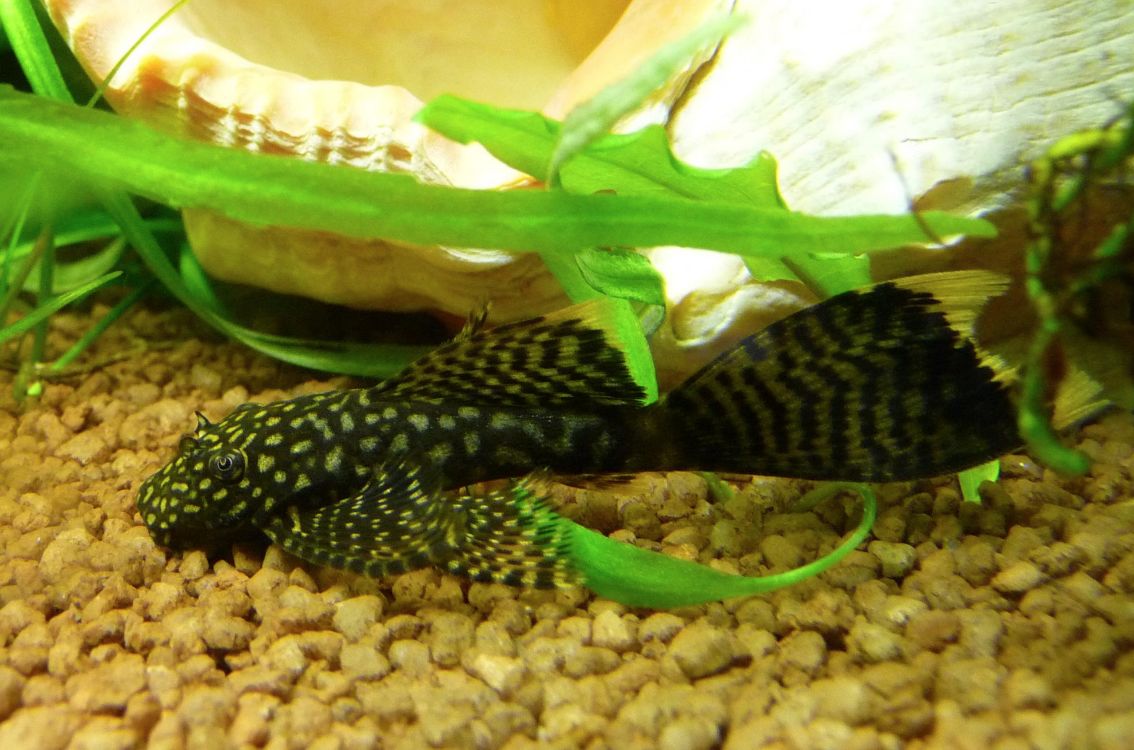
Care and keeping in a tank
Water parameters
Here are the most optimal conditions to keep this fish in a tank successfully: water temperature should be about 24 °C (75 F), dGH 20—25°, pH — in the range from 6/5 to 7.5. Water renew should be done at least weekly – ¼ of old tank water should be renewed with fresh water.
Tank size
The recommended tank size for a bristlenose pleco (Ancistrus spp.) depends on the number of plecos you plan to keep and the available space in your aquarium. While bristlenose plecos are relatively small compared to some other pleco species, they still require adequate space to thrive.
For a single bristlenose pleco, a tank with a minimum size of 20 gallons (75 liters) is recommended. This allows them to have enough swimming space and provides ample surface area for grazing and exploring. However, if you plan to keep multiple plecos or other fish in the same tank, you will need a larger aquarium to accommodate the additional occupants.
Tank decor
Create plenty of hiding spots in the tank, such as caves, rocks, or driftwood. Bristlenose catfish are nocturnal and enjoy having secure places to retreat during the day.
Bristlenose pleco prefers shadowed tank areas which should be taken into account when designing the tank. This fish swims almost all the time looking for some live or plant food leftovers on the tank bottom.
This catfish likes being in the water flow area which is created by the pumps of tank filters. It’s important to keep in mind that the bristlenose pleco may get inside the filter and die, that why it’s recommended to get the filter output tube up at some distance from the tank bottom or close it with some grid.
This catfish gets used to new tank conditions quite easily, and what’s interesting, is that juveniles at the age of 2-6 month adapt faster than adult fish. When buying juveniles you should ask about the tank conditions where they used to live and about the feed they were given there.
Substrate
Use a soft substrate like sand or fine gravel.
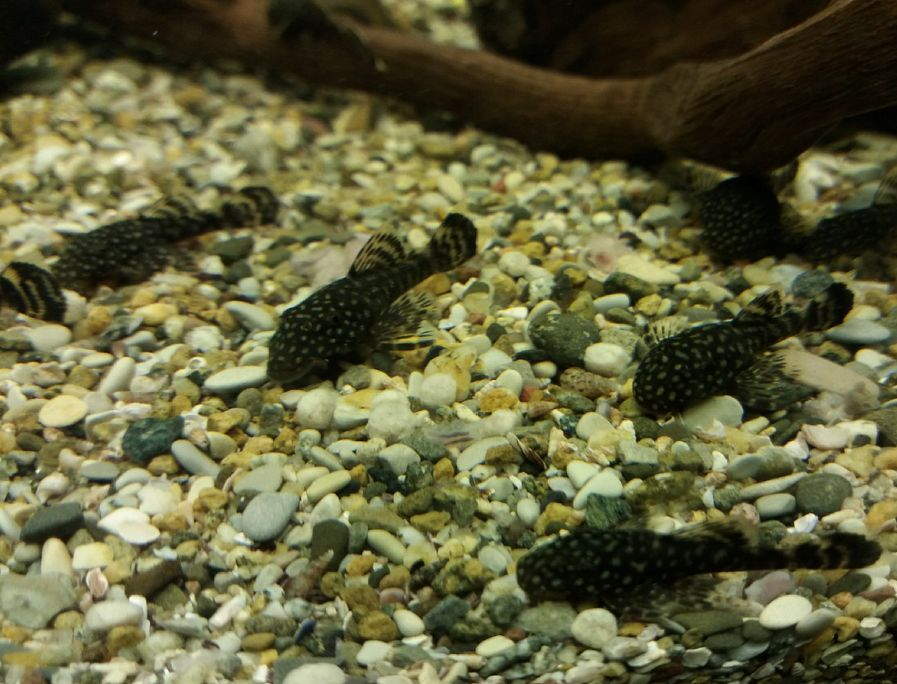
Diet
Bristlenose pleco is considered to be a algae eater. Namely this feature of the cupule makes this catfish an irreplaceable one to deal with fouling on tank glass and decorations. Due to the unique structure of its mouth fish scrapes any small fouling. Thus, we can say that the fish isn’t demanding as for the feed and it can find food on its own. However, this doesn’t mean that the aquarist doesn’t have to feed the fish. Diet has to consist on 70-80% of plant food and 20-30% of protein.
It’s important to have some snag in a tank because by sucking it around the catfish gets lignin, which is important for its digestive system.
When there’s not much fouling in a tank, the bristlenose pleco may start eating tank plants and usually young and soft leaves suffer from this, the fish gnaws holes in them or just eats them completely. To avoid this it’s advisable to give some additional plant feeding to bristlenose pleco. The easiest way is to feed it with some branded food with plant components.
Also you may use some parboiled lettuce leaves (it’s enough to put them into boiling water for 1 minute), or it may be cabbage leaves or a cucumber (cut it into pieces and also put into boiling water on a fork).
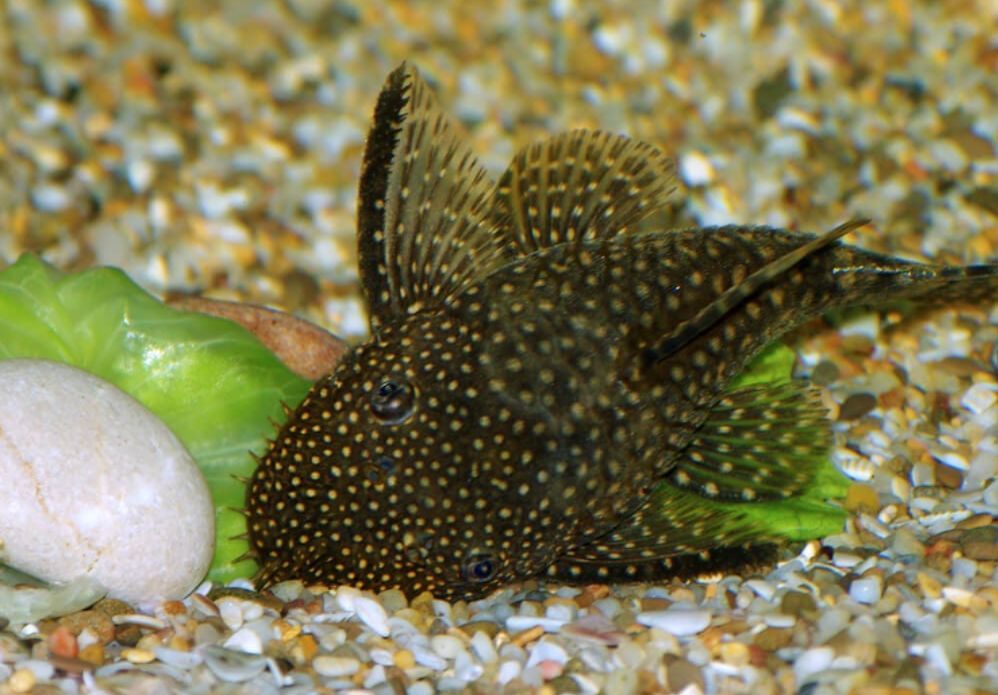
Tank mates
The bristlenose pleco is a territory dependent one, however this concerns only the fish of the same kind. Males start fighting for territory and the one that is larger makes the smaller one leave. Some smaller catfish species can be compatible with bristlenose plecos, such as otocinclus catfish (also known as oOto cats) or smaller species of Synodontis catfish.
Bristlenose plecos can coexist with other bottom-dwelling fish, such as Corydoras catfish (e.g., adolfoi corydoras, panda corydoras) and kuhli loaches. These species occupy different areas of the tank and generally have peaceful temperaments.
Bristlenose plecos usually do not pose a threat to dwarf shrimp species like Cherry shrimp or Amano shrimp.
Is compatible with any fast and active fishes that swim in the middle water layer, including tetras (e.g., neon tetras, ember tetras), rasboras, gouramis, peaceful cichlids (e.g., dwarf cichlids), peaceful barbs, and peaceful livebearers (e.g., platies, mollies, swordtails).
- Harlequin Rasboras (Trigonostigma heteromorpha)
- Neon Tetras (Paracheirodon innesi)
- Ember Tetras (Hyphessobrycon amandae)
- Glowlight Tetras (Hemigrammus erythrozonus)
- Black Neon Tetras (Hyphessobrycon herbertaxelrodi)
- Cardinal Tetras (Paracheirodon axelrodi)
- Rummy Nose Tetras (Hemigrammus rhodostomus)
- Dwarf Gouramis (Trichogaster lalius or Trichogaster chuna)
- Sparkling Gouramis (Trichopsis pumila)
- Celestial Pearl Danios (Danio margaritatus)
- White Cloud Mountain Minnows (Tanichthys albonubes)
- Dwarf Rasboras (Boraras spp.)
- Endler’s Livebearers (Poecilia wingei)
- Guppies (Poecilia reticulata)
- Platies (Xiphophorus spp.)
- Corydoras Catfish (Corydoras spp. – pygmy cory, panda cory, adolfoi catfish)
- Otocinclus Catfish (Otocinclus spp.)
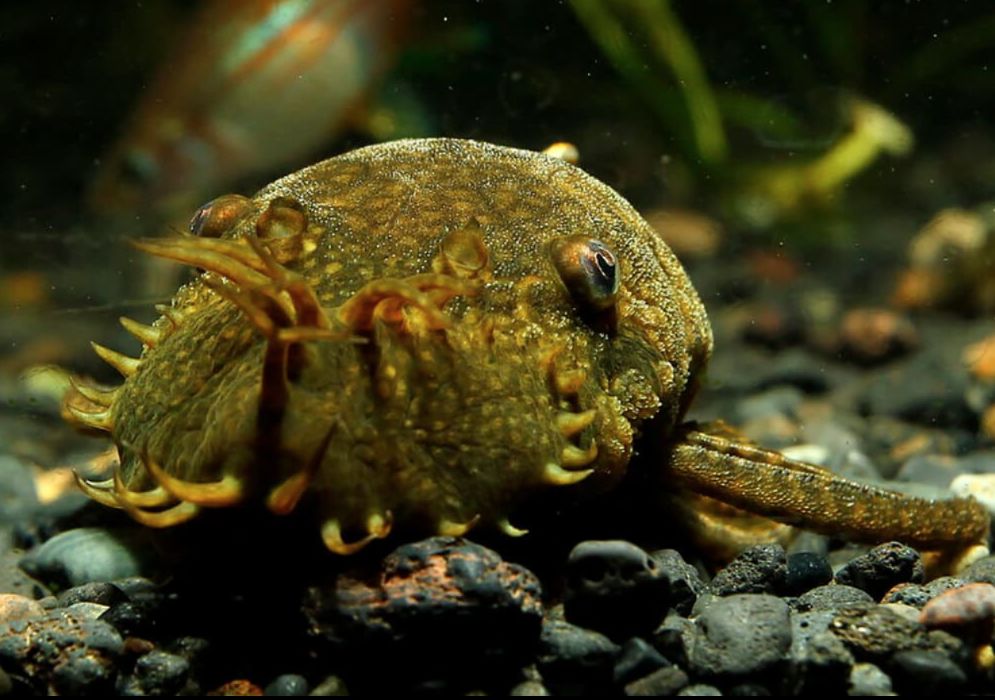
Gender differences: male vs female
It’s easy to see between female and male bristlenose pleco! The male has some multiple bristle-like tentacles along its head, due to which the fish has got its name. The female has these outgrowths only along the head edges, they are ill-developed or they are missing at all. Besides, the male are much larger than the female one and they are more aggressive. Males can be more territorial compared to females, especially towards other males. They may exhibit aggressive behavior and establish territories within the aquarium. Females, on the other hand, are generally more peaceful.
Breeding
It’s easy to breed bristlenose pleco, quite often they spawn in a community tank, however, as a rule, their juveniles don’t have any chances to survive in such conditions. Usually the fish lays its eggs in some slits in a tank or in tubes, quite often they may do this even behind the water filter and if they can get inside it, so they’ll spawn there.
How often do bristlenose plecos breed?
In general, bristlenose plecos can breed several times a year, especially when they reach sexual maturity. They are known for their ability to breed readily in captivity. Once a male and female pleco pair forms a bond, they may engage in courtship behaviors, including the male cleaning a potential spawning site and the female inspecting it.
Demolishing the common view that this fish doesn’t have any parental instinct, male eagerly takes care of their eggs and newborn juveniles. After the female lays some bright orange large eggs, the male starts taking care of them by cleaning them with his mouth, dusting them with his fins and guarding from all possible dangers including the female herself.
For purposeful breeding we usually use a separate tank of not less than 20 gallons capacity without any bottom substrate or plants. You should put some ceramic or bamboo tubes, or stones, or snags in it. The moment when the bristlenose pleco is ready to spawn is defined by the level of how female gets fat – if a hungry female looks like an aerostat – so, it’s about time to put her spawning.
The water for spawning tank is taken from the same tank where fish used to live. To stimulate spawning add 1/3 of fresh defecated water into it and decrease the water temperature a bit (about 2 °C lower).
Sometimes the bristlenose pleco start spawning the very next day and more often the male spends several days looking for some proper from his point of view tube or slit and cleans it thoroughly this way preparing the place for his future nest. At the same time you can feed the fish right in the spawning tank and it’s better be some plant food. However, don’t forget to remove food leftovers to prevent them from rotting somewhere in the tank.
Spawning itself usually happens at night. The female lays from about 30 to 200 eggs, their number depends only on the female size and age. So, if it’s her first spawning, don’t expect to get high productivity. The eggs stuck to the surface that was prepared by the male in advance and after that the female is driven out and the male starts guarding his spawn.
The bristlenose pleco female should be taken away from the tank as fast as possible, since she makes the male nervous and he attacks her all the time and may even kill if the tank isn’t spacious enough.
The eggs grow for 4-7 days (it depends on the water temperature, so to speed up the eggs growth you may rise the water temperature after spawning up to 26-28 °C (78-82 F)), and all this time Male continuously guards the eggs without even leaving them to get some food. In case of pleco spontaneous spawning in a community tank you may take the eggs together with the male into some separate volume, especially it’s easy when the spawning has happened in a tube.
If the eggs were laid directly on the tank glass or somewhere behind the filters or stones (this also happens), you should carefully cut it off with a blade and put into a separate volume. Don’t be afraid of the fact that the eggs were exposed to air for some short period of time – this won’t do any harm to them. But in this case don’t put the male together with eggs, since after the stress he has suffered he stops taking care of the eggs and may even eat them.
Large larvae that hatches out have large yolk sac and for several days they stay together in a bunch, after that they start swimming around the tank little by little. Since this moment you should take away the bristlenose pleco male from the tank, too, and give some first food to the juveniles.
You may use different dry feed for juveniles, it’s especially comfortable to feed them with different tablets made for catfish.
The juveniles just stick all over the tablet and gnaw it. Those of them, who didn’t get to the tablet, swim fussy around it and eat some crumbles that fall on the tank bottom and try to get closer to the food source.
Provided with regular feed (at least 3 times a day) and daily water renew ( 20% of all water volume) juveniles grow very fast and at the age of 6 month they become almost as large as their parents are.
The juveniles become adult and reproductive approximately starting from the age of 10 month, so this is also their breeding age.